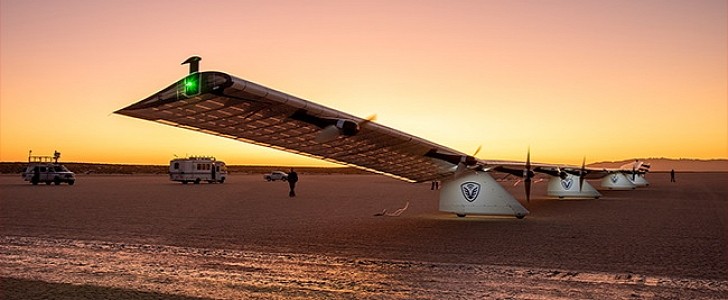You’ve probably heard of satellite advancements that are taking telecommunication systems and capabilities to the next level, but did you know that there’s an unmanned, solar-powered aircraft that’s about to revolutionize telecommunications services?
High Altitude Platform Stations (HAPS) are an alternative to satellites operating in the stratosphere instead of space. HAPSMobile, a subsidiary of a Japanese corporation called SoftBank, is one of the pioneers in this rising industry and developed the Sunglider.
This innovative aircraft is meant to carry the telecommunications payload to the required area, and the fact that it’s been backed by NASA shows the importance and potential of this new way of providing connectivity. In addition, this norm-breaking air vehicle was supposed to stay at operational altitudes for a long time without having to return to the ground for refueling.
The Sunglider is completely sustainable, powered only by batteries and solar energy. During the day, the solar panels charge the batteries so that during the night, the aircraft can continue to fly, powered by the charged batteries. This gives it an impressive 24/7 operation. Thanks to its lightweight construction from carbon materials, it’s able to fly even when the wind is not that strong, and it can also withstand turbulence due to the 256-foot (78 meters) wingspan.
This sustainable aircraft is also smart – the onboard computer controls it according to wind patterns. When it takes off, it’s guided by the ground control center, and when it reaches the stratosphere, an operation system directs it to the specific service location. Once it reaches that area, it’s able to fly autonomously for several months. The Sunglider is meant to operate at 12 miles (20 km) above the ground, and it can reach a speed of up to 68 mph (110 kph).
The Tokyo-based company founded the HAPS Alliance together with Loon, another player in the HAPS industry, and it recently announced that it had acquired more than 200 patents from Loon, who is winding down. With these new patents related to HAPS network technologies, services, and operations, the Japanese company will add even more capabilities to its upcoming services.
The Sunglider successfully conducted its stratospheric flight test last year, when HAPSMobile became the first in the world to deliver LTE connectivity from a fixed-wing unmanned aircraft in the stratosphere.
This innovative aircraft is meant to carry the telecommunications payload to the required area, and the fact that it’s been backed by NASA shows the importance and potential of this new way of providing connectivity. In addition, this norm-breaking air vehicle was supposed to stay at operational altitudes for a long time without having to return to the ground for refueling.
The Sunglider is completely sustainable, powered only by batteries and solar energy. During the day, the solar panels charge the batteries so that during the night, the aircraft can continue to fly, powered by the charged batteries. This gives it an impressive 24/7 operation. Thanks to its lightweight construction from carbon materials, it’s able to fly even when the wind is not that strong, and it can also withstand turbulence due to the 256-foot (78 meters) wingspan.
This sustainable aircraft is also smart – the onboard computer controls it according to wind patterns. When it takes off, it’s guided by the ground control center, and when it reaches the stratosphere, an operation system directs it to the specific service location. Once it reaches that area, it’s able to fly autonomously for several months. The Sunglider is meant to operate at 12 miles (20 km) above the ground, and it can reach a speed of up to 68 mph (110 kph).
The Tokyo-based company founded the HAPS Alliance together with Loon, another player in the HAPS industry, and it recently announced that it had acquired more than 200 patents from Loon, who is winding down. With these new patents related to HAPS network technologies, services, and operations, the Japanese company will add even more capabilities to its upcoming services.
The Sunglider successfully conducted its stratospheric flight test last year, when HAPSMobile became the first in the world to deliver LTE connectivity from a fixed-wing unmanned aircraft in the stratosphere.











